
Horn-u-Copia's Display of Makers

|
460 |

|
Instruments
Elkhart (Martin) Instruments
Indiana Instruments
Martin Instruments
Related
Martin Prices 1938
Martin Trombone Ad 1939
Related page
1. Martin Committee Trumpet
2. Martin Committee Trumpet
Martin Prices 1938
Serial
Martin Serials
Patents
Martin Band Instrument Company
Elkhart, In
USA
1879/1891/1907/1910-1961/1971/2007
A History of the Martin Companies
Excerpted from
History of Martin by Ron Berndt
| Elkhart Musical Instrument Company | Â Â Â Â Â Â Â Â Â Â | Indiana Brass Band Instrument Company | Â Â Â Â Â Â Â Â Â Â | Later Years |
In 1850, a young Johann Heinrich (John Henry) Martin (1835-1910), began an apprenticing with Christian Hemming, Dresden, and his brother, Gottfried Robert (Godfrey) Martin (ca.1835-1900) left for the United States and in 1852 established a small brass instrument workshop at 1 Franklin Square in New York.
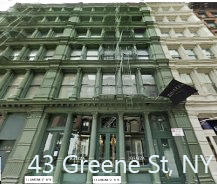 John Henry joined his brother in New York in 1855, and the Martin firm relocated to 34 Forsyth Street, and again moved in 1858 to larger quarters at 59 Forsyth. In 1864, they moved several blocks away to new quarters at 43 Greene Street in New York. The building still stands. Brother John Henry Martin left around this time to establish The Martin Co. in Chicago.
John Henry joined his brother in New York in 1855, and the Martin firm relocated to 34 Forsyth Street, and again moved in 1858 to larger quarters at 59 Forsyth. In 1864, they moved several blocks away to new quarters at 43 Greene Street in New York. The building still stands. Brother John Henry Martin left around this time to establish The Martin Co. in Chicago.
In 1867, GR Martin then formed a partnership at 41 Greene Street with Moses Slater (1826- 1889) as Martin and Slater, making valves and repair. In 1869, Martin & Slater moved into new quarters at 221 Greene.
In 1871, John Henry Martins Chicago Company was wiped-out by the great Chicago fire. The impact to the Martin family was severe. GR Martin had been building a large new facility at #31 Courtlandt street.
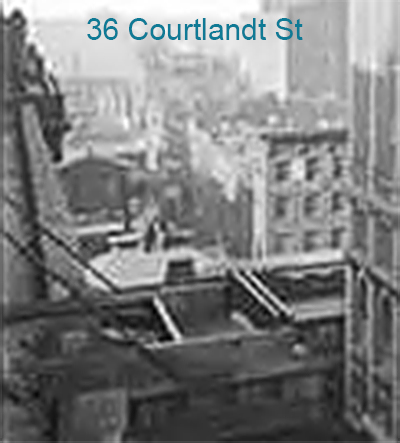
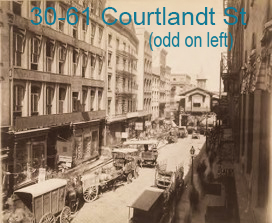
31 Courtlandt appeared briefly on horns labeled Martin & Co.
Following the Chicago disaster, Martin formed a new partnership at 36 Courtlandt, named Slater & Martin. Slater and Martin would continue through 1874 until Slater founded a new Slater Musical Instruments Company at 42 Courtlandt and various other addresses until 1920.
Below is a cornet made by Martin & Co. 31 Courtlandt in 1871.
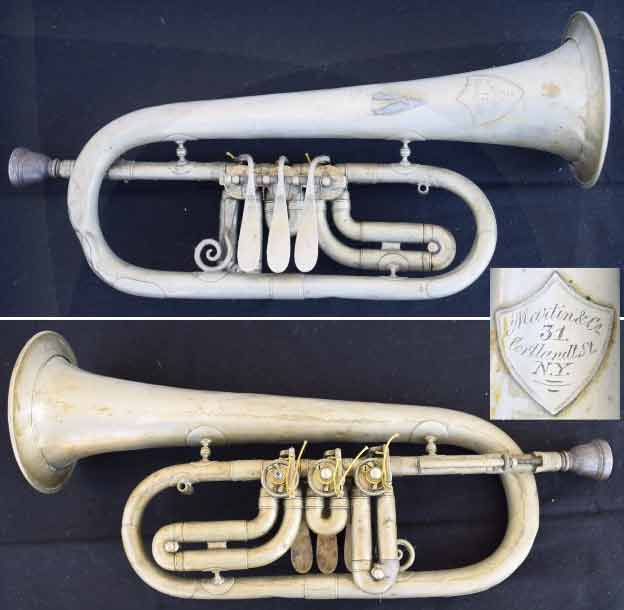
In 1872, Martin also formed a partnership with Henry August Pollman. The firm of Martin, Pollman & Co. operated at
31 Courtlandt.
Eventually, 31 Courtlandt became retail space with mixed commercial use. In 1965, the space was siezed under eminent domain and demolished to build the Word Trade Center complex. 4 World Trade stood on the site of the Martin businesses until destroyed by the falling South Tower in 2001.

During the time of the Martin Brothers partnership, it appears that GR Martin also attempted to, rather
 dis-honestly, leverage the Martin name against the success of CF Martin & Co. in the guitar business as shown by the 1881 advertisement shown at left for G Robert Martin, Manufacturer of the celebrated Martin Guitar. These fake Martins have confused many collectors in the 21st century. (Note the 31 Courtlandt address)
dis-honestly, leverage the Martin name against the success of CF Martin & Co. in the guitar business as shown by the 1881 advertisement shown at left for G Robert Martin, Manufacturer of the celebrated Martin Guitar. These fake Martins have confused many collectors in the 21st century. (Note the 31 Courtlandt address)
Back in 1868, Boosey & Co. Bought out the Distin Company and began brass instrument manufacturing. After selling his company, Distin began a series of failed concert promotions and by 1876 was able to relocate to New York. His stated purpose was to superintend at Martin facility on Courtlandt. His arrival coincided with John Henry Martin going to work at the new Conn & Dupont Company and moving his family to Elkhart. It is said Martin was the sixth Conn employee - Gus Buescher was #5.
In 1878, Henry Distin left the Martins and began building instruments in his name.
1879 saw the departure of August Pollmann from the Martin partnership, and the 31 Courtlandt Street firm became Martin Brothers as makers and importers. Pollman began a new firm selling instruments under his own name.
In 1885, following the closure of Martin Brothers, both John & Robert Martin went to work as tradesmen at the Michigan Musical Manufacturing Company in Detroit. John returned to Elkhart and employement at CG Conn the following year while Robert remained with what became the Detroit Cornet Company until 1887.

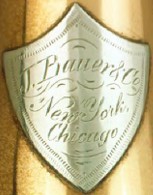 The Martin companies had two ways of marking instruments. The first was to engrave the bell near the rim. The second was to affix a shield plate in the old Austro-Hungarian tradition. The font seems to be the same regardless. However, it becomes more interesting when one considers that the same shields were in use by other, unrelated firms. Most likely, the engraving was all done by a Manhatten Jeweler. Also very interesting is that the shield used on the 1871 cornet, when Martin had a presence in Chicago, appears on a Julius Bauer stencil of what the National Music Museum describes as an 1870s Martin Brothers horn (which would be before Martin brothers, either MP&C or Martin & Co.). That same cornet is marked elsewhere, GM Timbrel, leading the National Music Museum to speculate Timbrell was the engraver. Also worthy of some note is that the later Martin Band Instrument Company would use a shield logo.
The Martin companies had two ways of marking instruments. The first was to engrave the bell near the rim. The second was to affix a shield plate in the old Austro-Hungarian tradition. The font seems to be the same regardless. However, it becomes more interesting when one considers that the same shields were in use by other, unrelated firms. Most likely, the engraving was all done by a Manhatten Jeweler. Also very interesting is that the shield used on the 1871 cornet, when Martin had a presence in Chicago, appears on a Julius Bauer stencil of what the National Music Museum describes as an 1870s Martin Brothers horn (which would be before Martin brothers, either MP&C or Martin & Co.). That same cornet is marked elsewhere, GM Timbrel, leading the National Music Museum to speculate Timbrell was the engraver. Also worthy of some note is that the later Martin Band Instrument Company would use a shield logo.
In 1904, the sons of John Henry Martin, who had worked with him at Conn until a stroke forced him into retirement in 1902, established the JH Martin Band Instrument Company. In 1905 it was reorganized into the Martin Band Instrument Company. Control of the Martin firm in its first years was split between Henry Charles Martin, Robert J. Martin, Charles E. Martin and Frederick Martin.
Elkhart
In 1911, the Elkhart Musical Instrument Company was established by William J. Gronert (b 1851-d.1919). Gronert, a British military musician worked for Conn as General Manager from 1881 until 1911. Conn had contracted with Gronert to produce instruments for which he was to receive $.35 per instrument. But, Conn fell behind in payment, and Gronert sued Conn and won the suit.
Martin and Elkhart Merged
The Martin company was bought in 1912 by a young employee of just 4 years, Francis Compton (b. 1885) who had begun as a bookkeeper. He brought in WJ Gronert, who is credited with starting to stabilize Martin in 1916 and merging his Elkhart Musical Instrument Company. Gronert died in 1919. The company was bought by O.P. Basset in 1920. Henry C. Martin remained President of until 1922.
The Handcraft brandname is added to all Martins starting around World War One as a celebration of the small firm inability to afford the mechanization of its larger rivals.
The Dansant was a popular model of the 1920s1, though it appears it was introduced in the 1910's. With a medium
bore, it has some playing characteristics of the later Martin models
but was more cylindrical than preferred for modern taste. Some
models had a Bb/A rotary valve. There were also horns designed for playing in C/Bb/A but they required a separate set of crooks. In the 1920s Bunny Berrigan played a Martin Dansant.
Fred Holtz was a former circus musician who began at Martin as Sales Manager in 1921, and achieved the first large distribution agreement for Martin instruments through the Wurlitzer network while in that role.
The Troubadour was a model of the 1930s. A "pea-shooter" model,
common for its time, it has a smaller bore and a long narrow design.
The valves were bottom sprung and art-deco design details.
The Martin Handcraft Imperial was the top of the line until
1939. Upon the introduction of the Handcraft Committee at that time,
the Imperial became a student grade horn.
In the late 1930s the company put together a process to design instrument by Committee, and named as such. The trumpet, which became the most notable of the Committee models, was designed by Renold Schilke, Vincent Bach, Elden Benge, Foster Reynolds, and an unnamed local player.2
There was also a Martin Standard model which coexisted with the Committee until 1945, when it was discontinued.
Indiana Brass Band Instrument Company
In 1928, Fred Holtz and James State incorporated the Indiana Band Instrument Company with $10,00 of capital stock (Music Trade Review, 1929)
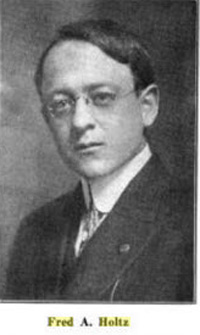 to sell low-priced instruments made at the Martin plant and using older Martin designs.
to sell low-priced instruments made at the Martin plant and using older Martin designs.
In 1930, Martin under the direction of Bassett bought Pedler Company.
In 1931, Bassett died and Holtz was soon appointed President by the Board.
In 1942, Indiana Band Instrument Company was merged into Martin, and the name became the student line.
In 1942, Martin was one of the few in the band instrument business not converted to war material production. The company folded Indiana into Martin as a model name.
Later Years
In 1948, Fred Holtz retired as President, having served in that role since 1931.
In 1958, Martin sold the Pedler plant and tooling to Selmer.
In 1960, Chicago Musical Instruments (Olds) sold the company to a new holding company, Richards Music Corporation. RMC then acquired Scherl & Roth, (Reynolds), E.K. Blessing Company, and Martin by 1962. The merger was short lived however as the debt incurred to acquire so many companies was unsupportable with the shrinking sales of even leveraged existing product. RMC folded in 1963, and Wurlitzer acquired Martin.
The RMC Martin Indiana’s being large .468 bore is sometimes mistakenly considered a cheaper version of the #3 bore. During the RMC years Reynolds, Martin and Blessing individually made their high end horns, but Blessing made all 3 versions of the student horns: Emperor, Scholastic and Indiana. The .468 bore was Blessing’s standard at the time
From 1964 to 1969, Wurlitzer, which had stenciled and occasionally built brass instruments almost since its founding, elected to retire from band instrument manufacturing. In 1971, Martin was sold to Leblanc USA. All Leblanc research and development in brasswinds was consolidated at the Martin plant in Elkhart.
In 2003 Selmer merged into the Steinway Musical Properties group. This brought together Steinway & Sons, Armstrong, Benge, King, Conn, Scherl & Roth, Selmer, Buescher, Bundy, Vincent Bach, Ludwig, Musser, and in 2004, Leblanc, Noblet, Vito, Frank Holton and Martin. The company was structured into two divisions with Steinway and related keyboard businesses in the Steinway division, and the band instruments in the Conn-Selmer division.
In 2008, facing declining sales, Conn-Selmer halted production of Martin, Buescher, and Holton.
Contribute new Data (or Corrections):
Information posted here will be added to this page.
This is not the place to ask questions, as users will only occasionally visit a particular Maker's
page. Pease use the forum to ask questions or talk about your instrument.
(Please use the forum for discussions, questions, etc.)